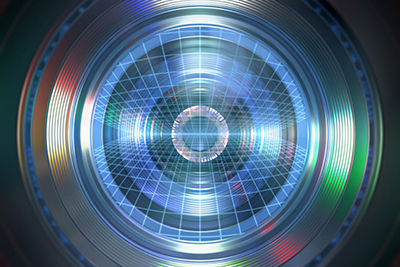
Surveillance cameras are effective security tools. But they're often used passively. Because businesses and governments don't have the budgets for continuous monitoring, they're left watching the footage after a crime is committed. But machine vision might be able to better protect the public.
What Is Machine Vision?
Machine vision adds the ability for an automated system to "see" its environment. Complex systems capture an image with a camera. Then they digitize the photo, process the contained data, and then use the data to take some kind of action, like alerting law enforcement.
Machine vision is already commonly used for industrial processes like manufacturing automobiles and inspecting aircraft components. But thanks to artificial intelligence, machine vision is finding new applications. And surveillance tech is using machine vision to catch criminals.
How Machine Vision is Used in Surveillance
Many crimes, whether reported or not, are captured on surveillance cameras. But there are times when law enforcement and victims don't even know the crime was recorded. Even if the recording of the act is found, once the perpetrator walks out of frame, they could be lost forever.
Pairing machine vision with AI has the chance to turn every surveillance camera into an ace detective. Developers have created systems that can search and analyze every detail in a video feed and turn it into searchable content. Users can query everything from clothes to cars to facial features.
In most motion camera systems today, frame-to-frame changes in the video prompt an alert. This leads to a large number of false positives. But machine vision does more than detect motion. It analyzes the scene, which means fewer false positives and a more effective system.
Machine Vision Can Help Increase Public Safety
Without even thinking about it, humans can fill in the gaps when a person's face is partially covered by another object. But constructing a complete image can be a challenge for machine vision. Researchers are also working hard to overcome occlusion constraints.
In crowded areas like city squares, partially-blocked faces might not even register as people, let alone a person of interest. Neural networks are being used to train AI to "fill in the gaps." This will give a single machine vision camera the ability to scan thousands of people per day.
Many criminals can't be identified because they are wearing disguises. Infrared cameras can detect prosthetics and wigs to thwart deceptive appearances. Machine vision trained with AI can see beyond glasses, beards, and hairstyles to catch repeat offenders.
Boost Your Surveillance With Machine Vision
Machine vision is growing fast because it works. Improve your surveillance practices with the latest cameras from Phase 1 Technology Corp. Let our specialists help you find the right machine vision camera for your surveillance system application.
